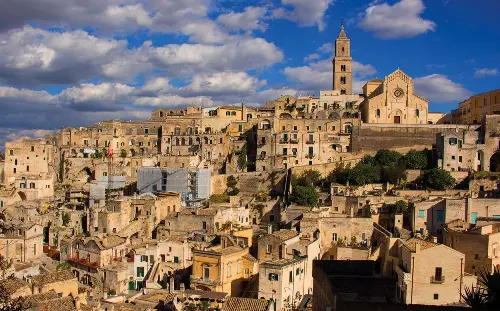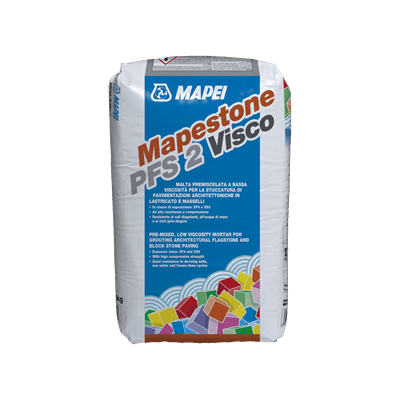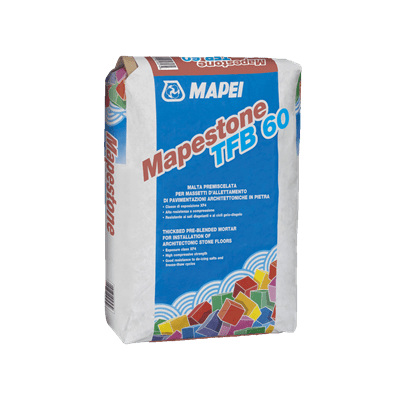
Matera, between technology and tradition for the project's architects
Interviewing the architects who designed the interventions, Sergio Lamacchia and Maria Teresa Fasano.
Interviewing the architects who designed the interventions in Matera, Sergio Lamacchia and Maria Teresa Fasano.
Matera is a “fragile” city in a geographically difficult position and has a communications network that leaves it quite isolated. Yet it managed to become one of the 2019 Capitals of Culture. How did you manage to overcome the task of repaving the existing roads? Tackling the problem of renovating road surfaces in old town centres means interacting with an idea that the population already has of the area and that you will also be leaving a mark that will last at least one hundred years. The overriding theme of “2019” was a further design challenge. This had an impact mainly on the installation schedule and the way we dealt with setbacks, an ever-present characteristic of restoration works, which were approached with extra determination.
Repaving the road surfaces, the introduction of a pathway for the visually impaired and redevelopment of the network of underground systems: these are just some of the interventions carried out to redevelop the three main thoroughfares in the old city centre. How did you overcome the problems of traffic and safety while the work was being carried out?
The intervention was carried out in an area that consisted of two main thoroughfares running parallel. These were also divided by work carried out over the course of the first half of the last century, which helped simplify the work thanks to the presence of various crossroads. Working in such conditions enabled us to divide the site into a series of separate and successive lots which, as the work progressed, occupied just single stretches of the main thoroughfares. Also, to guarantee access and mobility for pedestrians, each single stretch had suspended walkways with planks that could be adapted to suit the irregular form of the roads and pavements. Work was also often carried out underneath suspended walkways. For more invasive work we opted to work during the night.
The choice to use “basola” stones again, both the old ones and new ones, was entirely due to a desire to give a sense of continuity to tradition, or was it more of a technical and functional choice?
There are numerous reasons for choosing to use the old “basola” flagstones. Firstly, to maintain the history of the area, but also as a way of interacting with the buildings along the sides of the roads. Then there are sustainability reasons: the desire to recover and recycle means extracting a lower amount of new construction material from quarries. The same reason was behind the express wish of the Head of the local Office of Public Works to opt for recycling what would have been waste material from trimming the thicker flagstones to resurface the old pavements.
How did introducing the MAPESTONE system change the way things were run on site?
Using a specific type of mortar, such as MAPESTONE, meant there was an experimental phase, especially as far as training the workforce was concerned. They had to be instructed how to use the product correctly, so we asked for the support of specialists from the manufacturer so we could have the most direct information on the ready-mixed mortars provided. We proceeded by using practical, hands-on trials so that the operator of the mixing unit could appreciate for himself the correct viscosity of the mix before handing it over to the installation team.
Renovating roads in an urban context is not a simple task: how much does it help to be able to rely on cutting-edge products such as those proposed by Mapei?
Using ready-mixed mortar on site was a great help. It made installation of the road surface easier and it freed the workers from the arduous task of having to build traditional screeds, which certainly helped to speed up installation, and also the bags could be stored on pallets more neatly. But the most important aspect which a special mortar guarantees, is the durability of the road surface as a whole and its ability to preserve flagstones against the classic sinking effect and cracks. Apart from having a reinforced concrete substrate that has been prepared correctly, these aspects also depend particularly on the mechanical characteristics of the installation mortar, which must be able to provide the same level of support constantly in every area and have a high level of mechanical strength. An important contribution to the success of the installation operations was the presence of the manufacturer’s specialised technicians during the initial phase, which proved to be fundamental for the correct training of the workers, and then during various site surveys to check on the work and help overcome the type of problems you always come across on a restoration site. These meetings proved to be extremely useful and gave us the chance to compare the different materials used and find out more about their different variations and other possible applications in order to have a more complete technical understanding.














